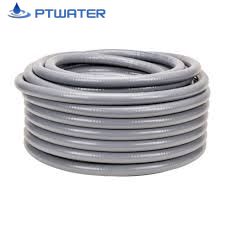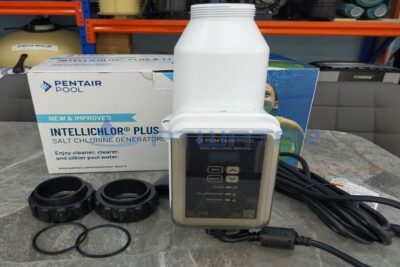



You know you’re the only one who buys that,” the counter person at my local distributor would say as he headed to the warehouse to pull a 50-pound bag of soda ash.
The industry standard has always been to use sodium bicarbonate (baking soda) to raise total alkalinity and sodium carbonate (soda ash) to raise pH — the exception being if both total alkalinity and pH are low. Understanding that it is impossible to raise (or lower) one without effecting the other chemically, there is still a “right tool for the job” analogy that comes into play.
Using sodium bicarbonate will have a more measurable effect on total alkalinity, while only raising the pH of water slightly. Sodium carbonate will actually have a dramatic effect on both pH and total alkalinity. Using sodium bicarbonate to raise pH is the equivalent of driving a nail into a wall using the handle of a screw driver — it can be done, but a hammer would handle the job more effectively and at much less of a cost.
So, if very few service companies are purchasing soda ash, one can extrapolate that either the pH in swimming pool water is never low, or individuals are using sodium baking soda to adjust pH. In fact, it is the latter that has become common practice, often supported by the argument that sodium carbonate is more likely to cloud the water slightly upon addition. With that, one has to understand that there are both water balance and product cost repercussions involved in making this chemical decision.
Sixteen ounces of sodium bicarbonate will raise the Total alkalinity of 10,000 gallons of water by 7.14 ppm. That same dose will also raise the pH by an amount that cannot be measured by standard industry test kits. On the other hand, 12.2 ounces of sodium carbonate will raise the pH of 10,000 gallons of water by 0.4, as well as increase the total alkalinity by roughly 8.6 ppm. (This assumes a pH of 7.2; a starting total alkalinity of 60 ppm; free chlorine of 1 ppm; cyanuric acid level of 0 ppm; calcium hardness of 300 ppm; TDS level of 900 ppm; and a water temperature of 80° F.) Typically a dosage of 6 ounces of sodium carbonate per 10,000 gallons is used, resulting in a 0.2 increase, enabling one to fine tune pH adjustments. This 6 ounces will also result in roughly a 5 ppm increase in total alkalinity, thus the reason we use sodium carbonate for the adjustment if both the pH reading and total alkalinity reading are low.
In our real world screw-driver-and-nail scenario, adjusting a pH reading of 7.2 to 7.6 in 10,000 gallons would take nearly 21 pounds of sodium bicarbonate. This dose would also increase the Total Alkalinity by 149.8 ppm. In our hammer-and-nail scenario, we can accomplish the same 0.4 increase in pH using 12.2 ounces of sodium carbonate, increasing the total alkalinity by only 8.6 ppm.
To help explain the seemingly large sodium bicarb (again, that’s baking soda, folks) dose requirement necessary to raise pH, I reached out to longtime friend Robert Lowry, owner of Lowry Consulting Group, LLC of Lima, Peru.
Here’s how Mr. Lowry explained it: “Realize that the pH of a very concentrated solution of bicarb will have a maximum pH of 8.3. Therefore the closer the starting pH is to 8.3, the more bicarb it will take.”
There are many factors to consider. He continued: “The pH scale is logarithmic, so the farther from 7.0, the more it takes, exponentially. One whole number is 10 times the preceding number. Alkalinity in linear. Using the given parameters, it would take 91.9 oz. or 5.75 pounds of sodium bicarbonate to raise pH from 7.2 to 7.4 with starting total alkalinity of 60 ppm. The new total alkalinity will be 101 ppm. It would then it will take 243.9 oz., or 15.24 pounds, to raise pH from 7.4 to 7.6, increasing the total alkalinity further from 101 ppm to 208.7 ppm. If cyanuric acid is present, then one must also consider the CYA influence (buffering capacity) on pH and alkalinity resulting in an increased amount of chemical to make the 0.4 change in pH.”
Got all that?
In any business, profitability is extremely important for its survival. One of the factors that directly effects profitability is control of expenses. One has to monitor the effect of every decision, including the decision to utilize sodium bicarbonate for pH control. Using current available pricing, a service company can purchase a 50-pound bag of sodium bicarbonate for about $13. Compare that to the cost of a 50-pound bag of sodium carbonate, which runs in the neighborhood of $18. If we were looking at an apples-to-apples dosage rate for pH control, this would indicate a savings of $0.10 per pound. However, as we discovered above, we will use much more sodium bicarbonate to make an adjustment in pH than we would using in sodium carbonate.
We have determined that it would take 20.98 pounds of sodium bicarbonate to adjust a pH reading of 7.2 to a reading of 7.6 in 10,000 gallons of water. (Utilizing the parameters mentioned above). At an average cost of $13 for a 50-pound bag of sodium bicarbonate, a cost of $0.26 per pound, this adjustment would cost the service company $5.45. At an average of $18 for the same volume of sodium carbonate, a cost of $0.36 per pound, this same adjustment would cost the service company $0.27. If a service company has 100 service accounts (10,000 gallons each) and had to make this adjustment on 25 of the pools they maintain each week, using soda ash instead of baking soda would result in savings of $129.50 per week. Folks, that’s $6,734.00 per year! Obviously pools larger than 10,000 gallons would recognize a proportionately greater savings.
One must also consider the potential cost in the “yo-yo” effect of this chemical choice. If the service company had indeed achieved the desired change in pH using sodium bicarbonate, then as discussed above, the result would also be a total alkalinity of 208.7 ppm. The amount of muriatic acid required, assuming a cyanuric acid level of 30 ppm, to correct this chemical imbalance in total alkalinity (80 to 120 ppm would be ideal) would also result in a pH level of 6.5 — far below our start point and again in need of adjustment.